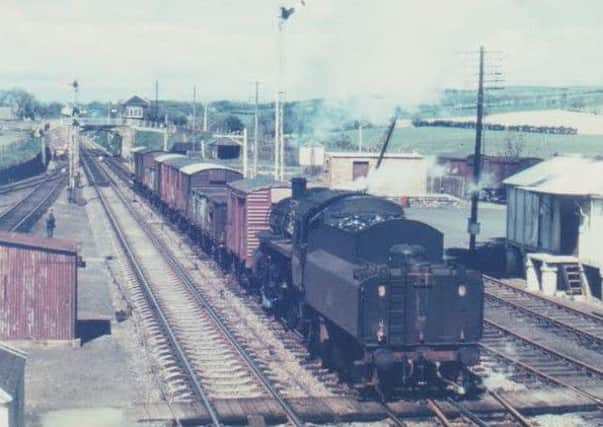Transport Matters


East–west communications within the area are far less important than those radiating from Edinburgh.
After the creation of the Borders Region in 1975 it was the policy of the new council to develop Galashiels as the hub of the Borders Region, and it was an early aspiration of the council to improve the east-west communications. A policy of scattering facilities around the region was adopted, so that, for example, Eyemouth has a major swimming pool and Kelso has the ice rink, and there were some road improvements to make travelling easier within the region.
Advertisement
Hide AdAdvertisement
Hide AdThe Waverley line having been closed in 1969, the trunk bus route to Edinburgh was improved, and the bus links to Carlisle and Berwick were designated as Rail-link services.
British Railways offered through tickets to Borders towns by these services, and these still exist, at least via Berwick, so that Duns and Earlston are still railway destinations, although Hawick seems to have been discontinued.
Despite these efforts, the fact remains that the main connections from all parts of the Scottish Borders are to Edinburgh, and it seems that some people feel that Berwickshire might be better associated with East Lothian rather than being part of the Scottish Borders.
As an aside, when the writer arrived in the area 40 years ago there was a real live possibility that Berwick would be re-united with its shire and be transferred to Scotland, which is why Berwick has a Scottish postcode. The logic of this was that the Tweed valley is the main line of communication through the Borders.
Advertisement
Hide AdAdvertisement
Hide AdAs an argument, this would have held up better if the two east-west railway lines, through Kelso and through Duns and Earlston, had survived.
As it is, Galashiels has been developed as the hub of the Scottish Borders with a population just short of 15,000, and now benefits from the revival of the railway thus far from Edinburgh.
Hawick having previously been the largest settlement, with a population of more than 14,000, is strongly advancing the case for an extension of the railway.
In Berwickshire, a population of around 12,000 is pressing for the re-opening of Reston station on the East Coast Main Line.
Advertisement
Hide AdAdvertisement
Hide AdThere has been pressure to re-open Reston station since 1979, and this became formalised with the creation of the Rail Action Group for Eastern Scotland (RAGES) in January 1999.
Success was achieved when the Scottish Government included it with East Linton as a requirement to be included in the franchise for Scotrail which took effect in April this year, and a draft timetable was published in the expectation that it would operate from December 2016.
Unfortunately it became evident that the right sort of train would not become available until 2018, when a whole tranche of new trains will be introduced for the major electrification of lines in the central belt known as the Edinburgh Glasgow Improvement Project (EGIP).
Even more unfortunately, some people of influence but apparently only a hazy knowledge of local geography, seem to think that the opening of the Borders Railway has met the needs of the whole of the Scottish Borders, and the pressure on the council to approve funding for the construction of Reston station has been relaxed.
Advertisement
Hide AdAdvertisement
Hide AdConsequently, direct pressure from Berwickshire has had to be redoubled to ensure that Network Rail can be authorised to begin construction so that the station is ready for the beginning of operation as soon as the trains are available.
Network Rail’s horizon is the boundary fence, outside which it has little or no influence, but Scotrail is operated by Dutch National Railways (Nederlands Spoorwegen), which trades in Britain as Abellio, and it is difficult to avoid the feeling that the railway management might be expecting a more integrated approach to the development of a new station than appears to be the case so far.
This will require action by the council in developing the surrounding area, which has suffered from planning blight awaiting the certainty of the new rail service and station, and also in connection with the bus routes passing through Reston, which will form essential links to the railway from the whole of eastern Berwickshire.
John Wylde is the author of ‘Integrated Transport – a Will-o’-the-wisp?’ This book is priced at £14.95, post paid and signed by the author. Also ‘Experiments in Public Transport Operation’, at £11.95. Order through the author’s website, www.john-wylde.co.uk, or from Grieves on the corner of Church Street in Berwick.